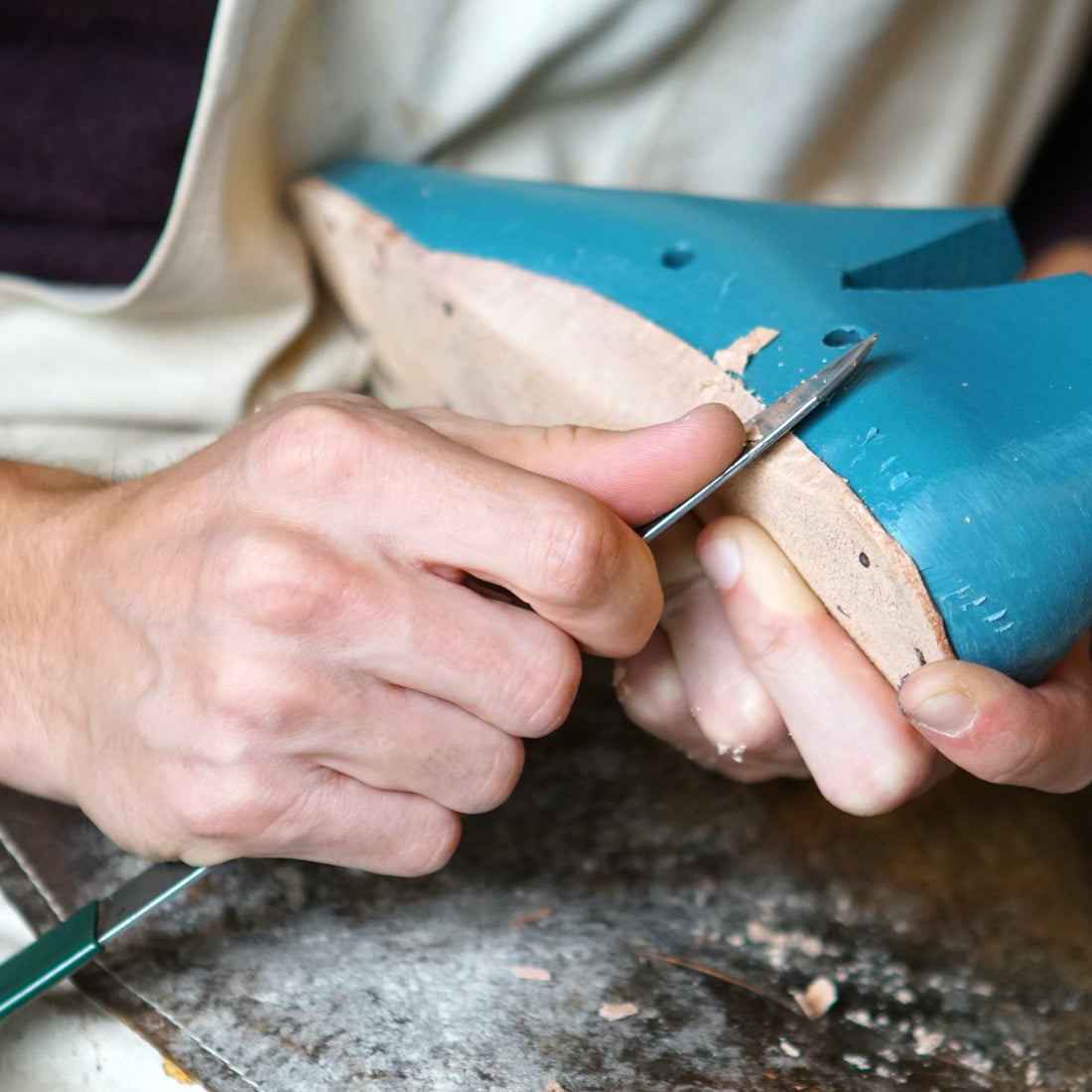
Vegan leather shoes: a sustainable and ethical production process
Share
Have you long wondered how to wear stylish footwear while respecting animal welfare?
More and more designers are using artificial leather for their creations - Stella McCartney, Gucci or Armani - whether they are guided by vegan principles or purely commercial reasons. Consumers are increasingly turning away from animal skins in favour of plastic or vegetable leather. These innovative substitutes are now established ethical alternatives.
But what exactly are we talking about? How is this material used to make moccasins, sneakers or sandals? We tell you everything you need to know about the production of vegan leather shoes, how to look after them and which eco-friendly laces are best suited to them.
Types of vegan leather
You may be wondering about the precise meaning of "vegan leather". Well, you're not alone: the dictionary contains no definition. It's a combination of contradictory terms, the first referring to an animal while the second does not.
Initially, this was a purely marketing term, but it has now become part of everyday language. It refers to a material of plastic or vegetable origin that imitates the look and texture of traditional leather - combining the characteristics of this noble material with the desire to respect animal welfare.
From fashion and leather goods to furniture and cars, a wide range of industries are seducing eco-responsible consumers with this innovative material.
Artificial leather
Artificial leather is not new - in the 80s it was known as imitation leather or leatherette. Made from microfibres or polyurethane (PU), it is now much better quality:
. Polyurethane is a polymer available in foam or fibre form and can be used to produce a variety of textures and visuals. It is water resistant, making it ideal for outdoor footwear.
But environmentally conscious consumers may be reluctant to buy this plastic material, as its durability is not optimal. So manufacturers have developed a second, purely natural alternative to conventional leather.
Plant-based leather
. Vegea, made from wine-making by-products ;
. Apple Skin, made from the by-products of apple juice production;
. Muskin; made from mushrooms.
©Unsplash – Shelley Pauls
There is currently no legally-mandated vegan certification. But various organisations, such as Swissveg in Switzerland and Expertise Végane in France, issue quality certificates for vegan and vegetarian products. Consumers can rely on these to guide their purchasing decisions.
The main stages in making vegan leather shoes
The process leading up to the creation of the shoes is very similar, whether the material used is conventional leather or a substitute product: meticulous planning, selection of quality materials and rigorous quality controls are all part of the programme.
Design & choice of materials
. Gore-Tex, waterproof and breathable, is a perfect protection against the elements.
Production
Once the materials have been selected, the different elements of the shoe are cut out and assembled using non-toxic water-based glue. The desired colour is obtained using natural dyes.
©tinyshoeatelier - Web & Instagram
Quality control
Vegan shoes then undergo a thorough quality control. They are checked for defects, durability and compliance with standards. This stage is essential to ensure that the shoes manufactured meet the requirements of durability, comfort and aesthetics.
How to take care of your artificial or vegetable leather shoes?
Vegan leather shoes, whether made from microfibres, polyurethane or plant-based leather, require regular care. This will nourish and protect them, and keep them looking as good as new. So you can keep them for longer!
Here are a few practical tips to help you take good care of them:
. Waterproofing: Protect your shoes from damp and stains by using a waterproofing spray specially designed for vegan leather. And, of course, follow the manufacturer's instructions.
. Regular cleaning: Clean your shoes regularly with a soft cloth slightly dampened with soapy water. You can also use a cream or shoe polish specially designed for vegan leather. However, avoid harsh chemicals, which could damage the leather. Then dry your shoes in the open air, away from direct heat.
You'll find more useful advice in our tips for taking care of your sneakers.
"Fashion is a way of expressing yourself, but it's also a way of making changes in the world." - Stella McCartney
Why buy vegan leather shoes?
. An alternative to toxic materials: by favouring natural elements, vegan leather is an ally for allergy sufferers.
Eco-responsible accessories for your feet
Eco-responsible shoelaces
Choosing eco-friendly laces is a great way to personalise your shoes. And you won't miss out on the effect if you remember to match the colours of your outfit.
A range of eco-friendly materials are available for lacing your shoes:
. Recycled polyester, made from recycled plastic bottles and hard-wearing ;
. Hemp, a sustainable plant that requires no irrigation or fertiliser.
Sustainable soles
. Jute, a hard-wearing, comfortable and breathable natural fibre;
. Cinnamon, an anti-bacterial and anti-fungal organic fibre;
. Rubber, made from latex, which is slip-resistant and shock-absorbent.
The production of vegan leather shoes has become a key fashion industry. Whether you're committed to animal welfare or respect for nature, or simply want to be fashionable, there's a shoe to suit you.
By paying attention to the materials you wrap your feet in, you can make respectful and ethical decisions without having to sacrifice style. The icing on the cake is that you can enhance your vegan shoes with sustainable accessories.
So go ahead and buy our eco-friendly laces made in France, and let your personality shine through!
Sources : EVE Vegan, V-Label, Institut Francais de la mode
Read also on the subject:
How to choose your vegan sneakers?
The importance of polishing your shoes
Wedding with sneakers or classic, Petit détail has what you need
And to find out more about Petit détail laces:
Your 100% Made in France laces
And on the global environmental approach of Petit détail, we invite you to read our page




